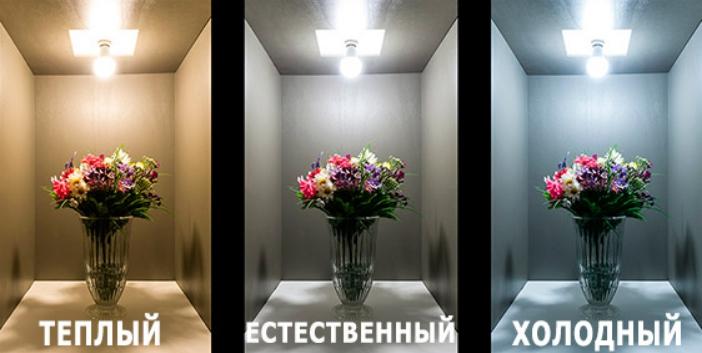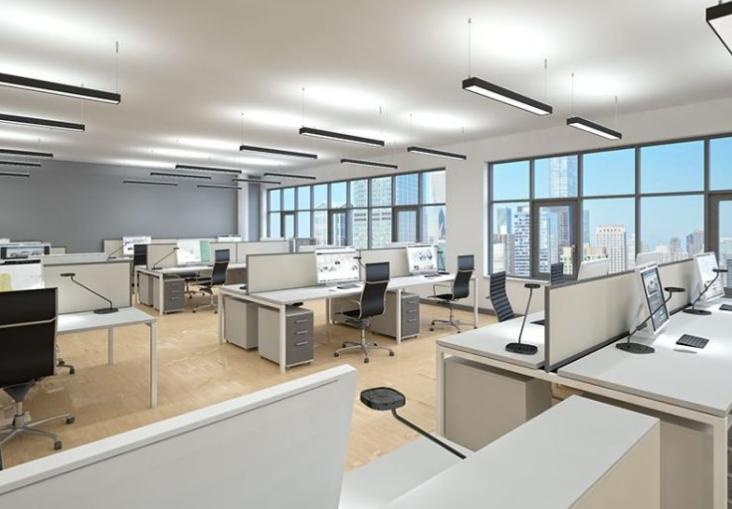What is the color temperature of a light source and what is it measured in
The temperature of light reflects the emission characteristics of any light source light source. It is used in many sciences: astronomy, physics, spectrophotometry, colorimetry, etc. Also this indicator is important in everyday life, on the right choice of lamps depends not only the perception of the room, but also the comfort of being in it.
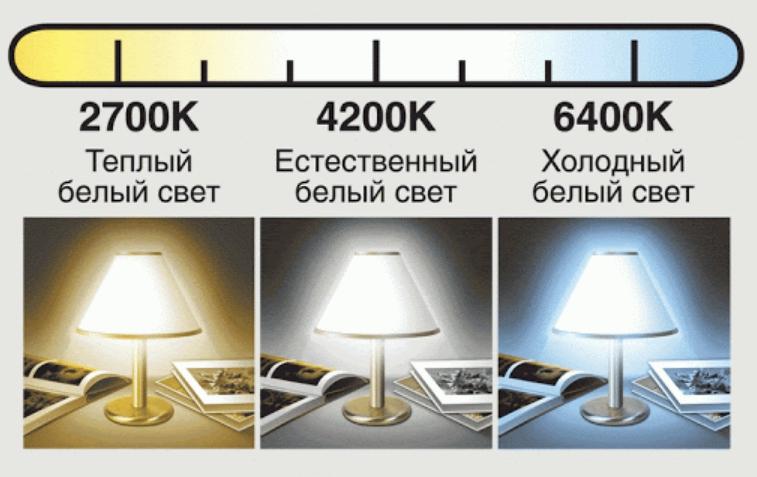
What is color temperature
The color temperature is the temperature of a black body at which it emits light similar to that of a lamp. The reference used to be the heating of platinum. When heated, metals emit a certain light, its brightness and range depend on the characteristics of the element and the degree of its heating. Each color has its own temperature, which made it possible to systematize the data and create a simple, understandable scale.
The color temperature of lamps shows what wavelength of light is emitted by the source. That is, a certain wavelength of light corresponds to a certain color. This is the main indicator when choosing lamps for at home, office or industrial premises. There are sanitary standards with recommended values, which should be adhered to.
Unit of measurement for color temperature
Kelvins are used to measure - lamps usually have a designation, it's a number with a big "K" at the end or a certain range. This is the universally accepted version used all over the world.
By the way! Photography uses a special unit of measurement called Myred or Mired.
An absolutely black body, taken as a reference, has a temperature of 0 K, that is, it absorbs the light falling on it. When heated to 500-1000° C, the element becomes red, with a color temperature of 800 to 1300 K. If the body is heated to 1700° C, it will turn orange, and the index will increase to 2000 K. As the body heats up, the color will first turn yellow (2500 K) and then white (5500 K). There can also be a blue hue (9000 K), but it would take a thermonuclear reaction to heat the body to that degree.
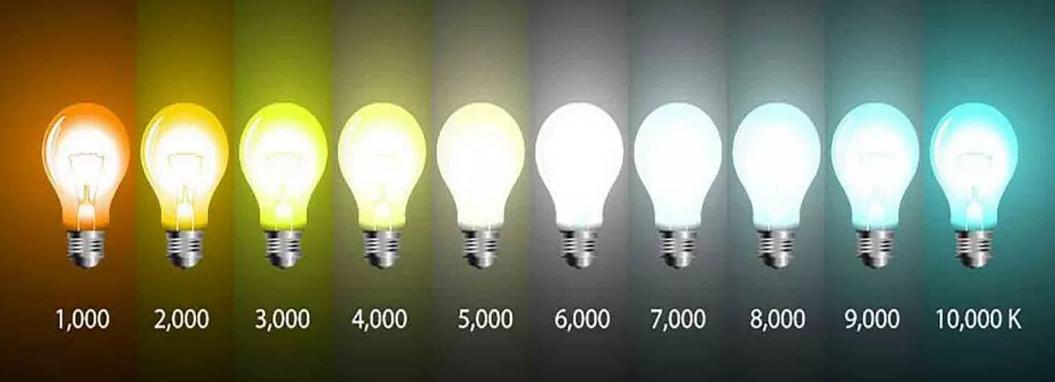
Many variations can be seen in the natural environment, just look at the sky:
- Yellow at dawn, when the sun is just rising (2500 K).
- At noon, the color temperature rises to 5500 K.
- With moderate cloud cover, the figure is about 7,000 K.
- A clear sky on a sunny day in winter has a color temperature of 15,000 K.
The first person to do serious research in this area was Max Planck.. He was directly involved in the creation of the chromaticity diagram (XYZ color model), which is used in lighting technology, photography, video recording, setting up graphics editors.
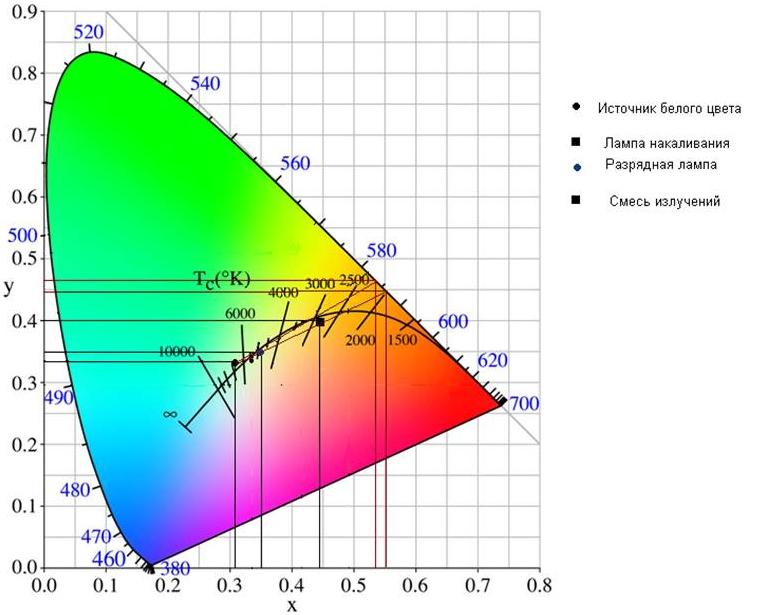
Scale of color temperatures of light sources
There is a certain gradation that allows you to quickly choose the optimal light source without going into the technical parameters of the lamp. There are five main groups that are most often used in residential or industrial rooms. Each group is characterized by a certain light temperature in Kelvin, the table will help to understand this point.
| Temperature range, K | Type of light | Detailed description |
| 2700-3500 | Soft white light with a touch of yellow | Allows you to create a quiet, comfortable environment, has a relaxing effect. Like incandescent and some halogen versions |
| 3500-4000 | White natural light | Provides good color rendering. This kind of environment is the least tiring for your eyesight. Used for general lighting in homes |
| 4000-5000 | Cool white shade | Gives good visibility, suitable for offices, public buildings, kitchen work areas, etc. |
| 5000-6000 | White Daylight White. | Allows for high-precision work. Most often used in production facilities |
| Over 6500 | Cold Daylight with a bluish tint | Used in rooms with the highest visibility requirements, such as operating rooms. Also it is used for video and photo shooting |
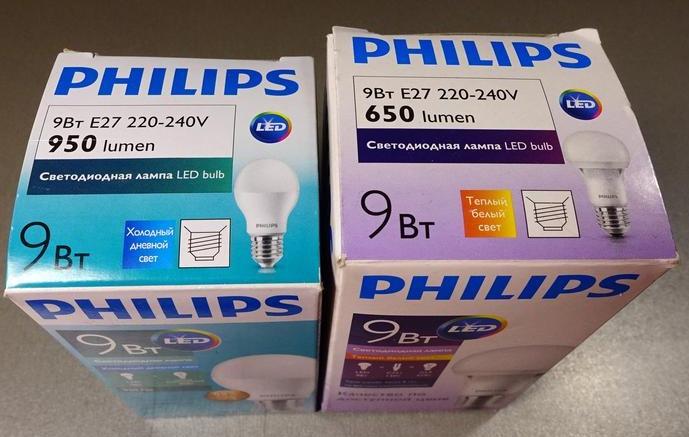
Color temperature data should be on the lamp packaging.
Color temperature ranges for lamps
If you need to choose a cool, warm or neutral light, you should pay attention to lamp type. Different variants have their own range of luminescence, due to the design. The table shows the average data relevant to most products. But there may be models with special characteristics, this is always indicated on the box.
| Type of lamp | Color temperature in Kelvin |
| Incandescent bulbs | 2700-3200 |
| Halogen | 2800-3500 |
| Sodium | Up to 2200 |
| Mercury arc lamps | 3800 to 5000 |
| Fluorescent (including compact ones) | 2700 to 6500 |
| Metal halide | 2500 to 20,000 |
| LED | 2200-7000 |
The largest gradation in the LED lamps, as they have the properties of light depends on the characteristics of LEDs used and the design. Moreover, even with the same data lighting can vary from manufacturer to manufacturer. There are 8 classes of lamps, each of them can be subdivided into subclasses. A unified system does not yet exist, but there is additional marking to help orient:
- WW (warm white).. Soft white light with a temperature of 2700 to 3300 K.
- NW (neutral white) .. Neutral or natural white light at 3,300 to 5,000 K.
- CW (cool white) .. Cold light, most often with a bluish tone. Temperatures of 5000 K and higher.
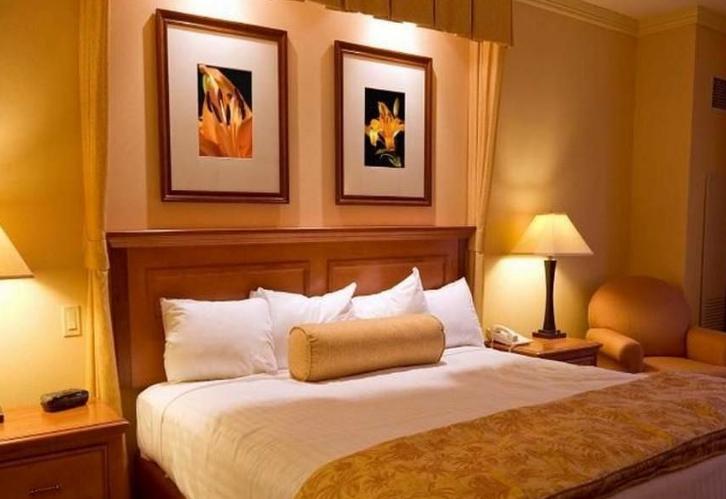
By the way! To ensure that all the lamps in the chandelier shine equally, it is worth selecting products from the same manufacturer.
How it works in normal life
The indicator in question affects not only the quality of lighting, but also the perception of the environment by the person and even their well-being. If you keep a few aspects in mind and stick to them, you can achieve a better effect without too many problems.
How perception depends
90% of the world's information is perceived through vision. Lighting therefore has a major influence on how we perceive our surroundings. Color temperature makes it possible to design a room just the way you need it in any given situation:
- Warm lightA warm light, usually between 2800 and 3200 Kelvin, is ideal for the bedroom or lounge. It is a calming atmosphere, relaxing and restful.
- The natural shades (around 4,000) create an environment in which you can both work and relax. The neutral variant gives the best color rendering, while not unnecessarily straining the eyesight.
- Cool tones (over 6,000) provide good conditions for precise work. But a long stay in such conditions is undesirable. This option is often used in the design of showcases.
Color temperature and our emotions
Lighting influences our feelings and moods is much more than it first seems. If you use it correctly, you can have a positive impact on the body and ensure the normal processes in it. We must remember the following:
- Yellowish tones are ideal for morning hours. They promote quick awakening, improve the mood and stimulate the vital processes. The warmth of light will come in handy in the evening, when you need to relax after the day's work and get ready for bed.
- Neutral options can be used during the day to ensure good performance. They are used in most rooms of the house because they create an environment close to natural sunlight.Neutral white light is used in offices.
- Cooler shades have a stimulating effect. They improve performance and increase attentiveness. But do not stay in such a room for a long time, it can lead to stress and the opposite effect - increased fatigue.
If the same room is used for different purposes, it is worth considering several lighting modes in it.
What is the color rendering index
Lighting influences perception of colors and shades. That is why all lamps are marked with color rendering index Ra, which is measured on a scale from 0 to 100. The benchmark is sunlight. As for the lamps, we can divide them into several color rendering groups.
| Category | Factor in Ra | Lamp types |
| Benchmark | 99-100 | Halogen versions, filament lamps |
| Very Good | Above 90 | Selected types of LED lamps, metal halide, fluorescent lamps with five component phosphors |
| Very good illumination | 80 to 89 | LED, fluorescent versions with three-component phosphor |
| Good light | 70 to 79 | LED, fluorescent LDC and LBC |
| Good light | 60 to 69 | LED, Fluorescent LB and LED |
| Intermediate light | 40 to 59 | Mercury and НЛВД (with improved color rendering) |
| Poor light | Below 29 | Sodium-vapor lamps |
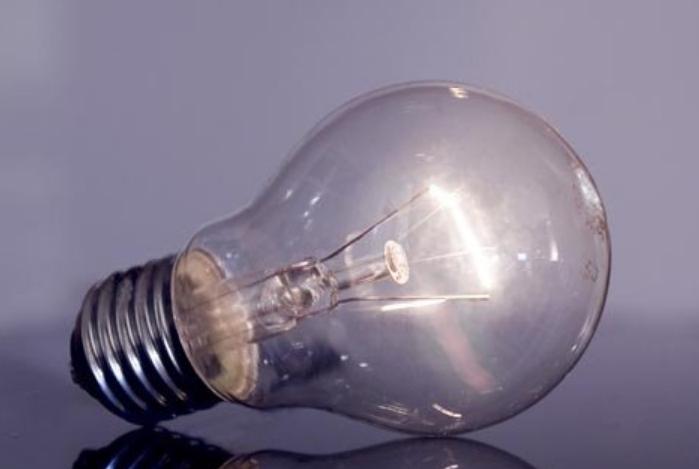
Lighting equipment selection according to light temperature
There can be different selection criteria. The easiest is to use the functional features of the room.
| Room type | General light, temperature in K | Spot light, temperature in K |
| Bedroom | 2400-3200 | 2400-3500 |
| Kitchen | 2800-3200 | 3500-5500 |
| Living room | 2800-4200 | 2400-4200 |
| Children's room | 2800-3200 | 2800-3500 |
| Common area | 3200-5500 | 3500-5500 |
| Study area | 3200-4500 | |
| Office | 4000-6500 | 4000-6500 |
You can convert the wattage of the lamps to their luminous flux. But it is not possible to convert to a color rendering index.
What parameters are used in technical light regulation
All lighting regulations can be found in SNiP 23-05-95. There are several criteria, listed in order of preference from the most significant:
- Illuminance, measured in lumens.
- Color temperature, in Kelvin.
- Color rendering index.
- Ripple ratio.
- Maximum allowable luminance.
- Uniformity of illumination.
- Watt density.
Choosing the right color temperature is easy. It does not need to perform calculations, you can take ready-made data that are suitable for a particular room.
